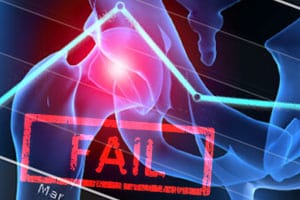
Dr. Chris J. Dangles, of the Carle Foundation Hospital in Champaign, Illinois, said that the hospital is still experiencing high revision surgery rates in its patients who were implanted with the DePuy ASR metal-on-metal hip implant device. Speaking at the yearly American Academy of Orthopaedic Surgeons, Dr. Dangles concluded that the hospital made the correct […]
 Dr. Chris J. Dangles, of the Carle Foundation Hospital in Champaign, Illinois, said that the hospital is still experiencing high revision surgery rates in its patients who were implanted with the DePuy ASR metal-on-metal hip implant device.
Dr. Chris J. Dangles, of the Carle Foundation Hospital in Champaign, Illinois, said that the hospital is still experiencing high revision surgery rates in its patients who were implanted with the DePuy ASR metal-on-metal hip implant device.
Speaking at the yearly American Academy of Orthopaedic Surgeons, Dr. Dangles concluded that the hospital made the correct decision in opting to cease using the DePuy ASR 18 months prior to its recall. “It was the right decision for us to stop using it even before the recall…. In addition, the device approval system failed all of us,” he said.
Dr. Dangles reported that, between 2006 and 2009, 19 percent of ASR hips were revised. At four years, the failure rate was 24 percent. He reported that nearly half of the women implanted with the metal-on-metal hip implant underwent revision surgery, according to MedPage Today. In all, 359 hips were implanted in 314 patients and after four years, average revision time ranged from 100 to 2,123 days, said MedPage Today.
National law firm, Parker Waichman LLP, is working to ensure the public is kept up-to-date with current news about metal-on-metal hip implants, such as the DePuy ASR. According to a MedPage Today report, the hospital continues to see high rates of revision more than two years after the ASR was recalled. In 2010, Johnson & Johnson’s DePuy ASR was recalled over a 13 percent revision rate seen in five years.
“This information further demonstrates that a number of patients are still suffering from the alleged defects of the DePuy ASR,” said Daniel C. Burke, Senior Litigation Counsel at Parker Waichman LLP. “The facility stopped implanting this all-metal device a year and a half before it was recalled, and doctors are continuing to see a high rate of revision.” Mr. Burke says that the alleged flaws of the DePuy ASR are a prime example of why metal-on-metal hip implants are dangerous as a class of medical devices.
Symptoms of complications include:
When the ASR was globally recalled, Dangles and his colleagues contacted patients who had been implanted with the ASR to conduct metal ion testing, physical examinations, and imaging studies to discover signs of complications, such as metal poisoning or tissue damage, said MedPage Today. “Stability, increased range of motion, and decreased wear were the selling points” of the DePuy ASR, said Dr. Dangles; however, five unusual revisions led the facility to stop using the implant. He said that the revisions included cases of adverse local tissue reaction, pseudotumors, fluid in the capsule, tissue staining, and motion in the acetabular cup.
In the second of nearly 11,000 lawsuits it faces over the recalled DePuy Orthopaedics ASR metal-on-metal hip device implant, Johnson & Johnson continues to deny that the ASR was defectively designed.
The defendant in the first case was just awarded $8.3 million in compensatory damages over the DePuy ASR. The jury in that case found that the ASR was defectively designed. This second case includes allegations that the DePuy ASR failed three years after implantation, leading to revision surgery, a typically painful and costly process that involves removing and replacing the ASR. DePuy ASR’s faulty design caused its failure and the need for additional surgery, the second plaintiff also alleged.
The all-metal hip implants were created for greater durability and longevity and with the intention that the seemingly stronger components would be far superior over their more traditional counterparts, which are constructed with plastic or ceramic elements. In recent years, the metal devices have come under fire for failing at unexpectedly high rates and leaving patients with significant and, often, life-long injuries. In fact, some experts say that European and American regulators worked to ensure patients were unaware of the devices’ risks and many have criticized device makers for placing profits before patient safety.


